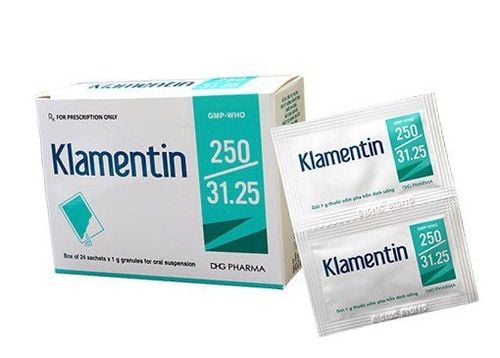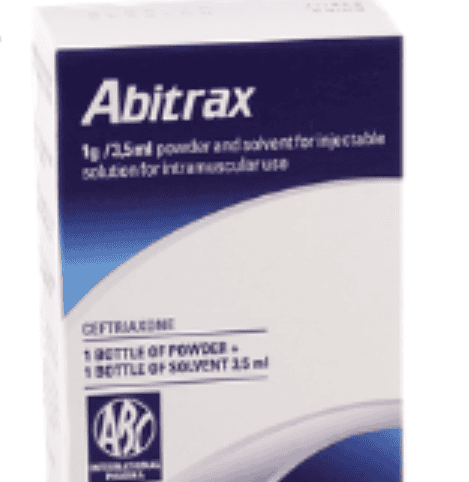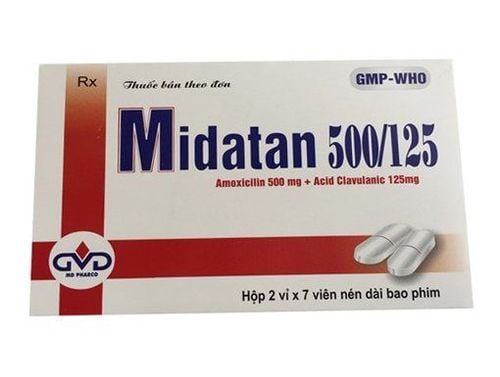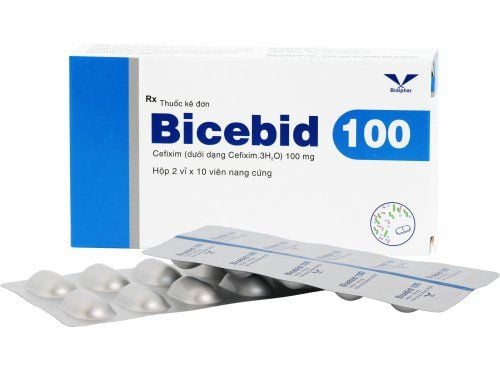This is an automatically translated article.
Vifortiam is classified as an antibiotic, antiparasitic, and antifungal drug. Vifortiam has the main ingredient Cefotiam, which is prepared in the form of a powder for injection. With a broad antibacterial spectrum, effective on many inflammatory diseases. The following article will share about the effects, usage and notes when using Vifortiam.
1. What is Vifortiam?
Vifortiam is an antibiotic used in the treatment of serious infections such as blood infections, purulent arthritis, lung infections. With the active ingredient in the drug is Cefotiam in the form of a mixture of Cefotiam hydrochloride and sodium carbonate with a content of 1g.Vifortiam drug is prepared in the form of powder for injection, the solvent for drug preparation is distilled water.
2. Uses of Vifortiam
The main antibiotic use of Vifortiam depends on the active ingredient Cefotiam. Cefortiam is an antibiotic belonging to the 3rd generation Cephalosporin line. Often used in the treatment of blood infections, surgical site infections, bronchitis, pneumonia,...
Bacterial strains sensitive to Vifortiam including:
Aerobic Gram-positive strains: Mecillin-sensitive Staphylococcus, Group A, B, C and G Streptococcus, other Streptococcus (0 - 28%), Streptococcus pneumoniae (10 - 40%) Aerobic Gram-negative strains: Branhamella catarrhalis, Escherichia coli, Haemophilus influenzae, Citrobacter koseri, Klebsiella, Proteus mirabilis, Proteus vulgaris, Providencia Anaerobic standards: Peptostreptococcus, Prevotella, Fusobacterium.
3. Indications for taking Vifortiam
Vifortiam intravenous drug with the main active ingredient Cefortiam is indicated in the following cases
Treatment of blood infections Prophylaxis of pre-operative wounds, infected burns due to burns Treatment of wounds caused by subcutaneous abscesses , toxic boils caused by infections with caps Treatment of spondylitis, infectious arthritis Tonsillitis, lung infections Acute cholecystitis Inflammation inside the uterus due to infection, acute otitis media.
4. Contraindications to taking Vifortiam
Vifortiam drug cannot be used in the following cases
Patients with a history of shock, allergy to Cefortiam Drugs not used intramuscularly in children With patients sensitive to anesthetics, aniline-based anesthetics are also contraindicated. intend to inject intramuscularly
5. Dosage & how to take Vifortiam
Vifortiam is used intravenously and intramuscularly. Usage is as follows
For intravenous injection, mix the drug with distilled water for injection, 0.9% NaCl (infusion physiological saline) or 5% Dextrose for intravenous injection to the patient.
For intramuscular injection, it should only be administered to adults. Each vial of Vifortiam should be diluted with 3ml of 0.5% Lidocaine hydrochloride before injection.
Dosage for intravenous injection
Adults: Standard dose 0.5g - 2g/day, can be divided into 2-4 injections/day. In case of bacteremia, the dose may be increased to a maximum of 4g/day. Children: Standard dose 40mg-80mg/kg/day (child weight). The injections of the day are spaced 6-8 hours apart. The dose of Vifortiam injection is adjusted according to the degree of infection and the age of the patient. Intramuscular dose
Adults: The standard dose is from 0.5g-2g/day, the time between 2 doses is 6-12 hours apart. Depending on the level of infection of the patient to adjust the injection dose as prescribed by the doctor. Vifortiam is only used intramuscularly when the patient cannot inject intravenously.
6. Vifortiam side effects
With parenteral antibiotics, side effects are always possible in any case. Below are the side effects that patients need to watch out for when taking Vifortiam.
Shock reaction: When there are any signs of a shock reaction, notify your doctor immediately and stop the medication immediately. Hypersensitivity may occur when taking Vifortiam, manifesting as urticaria, rash, redness, itching or fever. Skin may experience Steven Johnson syndrome or epidermal necrolysis (rare). Anemia, leukopenia, thrombocytopenia, eosinophilia. Acute renal failure. Intestinal conjunctivitis, pseudomembranous colitis. Abdominal pain, frequent loose stools. In the respiratory system, in rare cases, PIE syndrome may manifest with obvious symptoms such as fever, cough with shortness of breath, and abnormal x-ray results. In the central nervous system: complications may occur when using Vifortiam intravenously in large amounts. Superinfection can occur with stomatitis or candidiasis. Side effects can include vitamin K deficiency, glossitis, loss of appetite, headache and dizziness. When experiencing the above symptoms, consider discontinuing Vifortiam for treatment and immediately notify a specialist for timely management of complications.
7. Notes when using Vifortiam
Use caution when using the drug in patients with a history of hypersensitivity to Cefortiam, Cephalosporin and Penicillin groups. Caution should be exercised when using Vifortiam in patients or their families with a history of allergies, asthma, hives or urticaria. When taking drugs, it is necessary to closely monitor patients with difficulty in eating, lack and malnourishment, patients with nasogastric tube, the elderly, the debilitated or weak in physical condition. Toxicity and safety of Vifortam in pregnant and lactating women. Therefore, Vifortram should not be used in this audience. Do not use Vifortiam for infants. Vifortiam is used to treat moderate to severe infections. With the main active ingredient being the antibiotic Cefortiam of the Cephalosporin group, Vifortiam is used by intramuscular or intravenous injection as prescribed by the doctor.













